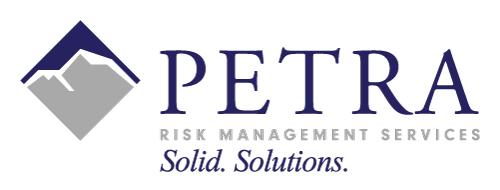Greetings to our Clients, Prospects and Friends,
Another week has passed in managing life within the confines of Covid-19. My hope and prayer for you all is that first and foremost, you or a family member have not contracted the Virus. If you have, our prayer is that you, or your loved one, has fully recovered, or on the path to full recovery.
Many of us, including our family, have loved ones working in the healthcare industry and have been exposed to Covid-19 patients. We are especially grateful for these valiant workers who risk their lives to protect each of us and those they are treating. In addition, our hearts go out to all those who have lost their jobs, or are not able to generate an income from their business. As we have witnessed, this Virus has no boundary on who it impacts.
No doubt, it has been a major life adjustment for everyone. Who could have imagined a world that would not allow any sort of social gatherings. Church, sporting events, restaurants – have all been banned from attending. As our nation and mankind has done in the past when calamities occur, we adjust as best we can and learn to adapt to our new environment.
Being in the Insurance and Risk Management business, we advise our clients to prepare for disasters – to have a Business Continuity Plan in place. Up to this point in time, these discussions and planning practices have normally asked the questions – “what if a fire or hurricane or tornado hit your facility, what would you do to continue your business?” I would imagine the question, “what would you do if a pandemic virus hit and you must shut the doors to your business for 2,3 or more months” has not been a primary areas of focus and planning. We learn from the past and certainly going forward all businesses will add to their Continuity Planning list – “what if another pandemic occurs, or the corona virus returns and worse than it is now?”
This edition of the PetraRMS Risk Management Center newsletter addresses some key areas that will hopefully allow you and your employees to make a smoother transition back to the workplace. While we do still encourage remote working, this edition provides some helpful tips for those situations where workers are or will be returning to work soon.
We wish all the best to each of you. May you, your family and your employees stay safe and committed to following the guidelines in place. At PetraRMS, our Mission is To Serve and it is our honor and privilege to have many wonderful customers we serve. Our hope and prayer is that your business and personal lives will be back to “normalcy” before long.
President and CEO,
Steve Nesbitt
Return to work safely
Throughout the challenges presented by the COVID-19 public health emergency, the goal has been to strike a balance between safeguarding health and protecting the US economy. Businesses are eager to get back to work. Business operations can and should return to a sustainable level without jeopardizing employees’ or customer safety. Many US jobs have been deemed “essential” under most State’s Stay at Home Orders and associated guidance from the Departments of Employment and Economic Development. These businesses have detailed strategies to protect their workforce from the spread of COVID-19 while ensuring continuity of operations. Based on the best practices shared by employers in these critical industries, the following guidelines and suggestions are offered to assist other businesses in their efforts to provide safe workplaces for their employees and customers as they come back online. Businesses are eager to have access to testing that will help identify individuals who may be sick with the virus and those who may be immune. Acceleration of testing availability is critically important to restoring public confidence and reopening our economy. By implementing these best practices, businesses are still subject to the restrictions of current or future state orders.
Employer Guidelines for all phases of reopening
Develop and implement appropriate policies, in accordance with Federal, State, and local regulations and guidance, and informed by industry best practices, regarding:
- Social distancing and protective equipment
- Temperature checks
- Sanitation
- Use and disinfection of common and high-traffic areas
- Business travel
Monitor workforce for indicative symptoms. Do not allow symptomatic people to physically return to work until cleared by a medical provider.
Develop and implement policies and procedures for workforce contact tracing following employee COVID+ test.
Phase 1:
Continue to ENCOURAGE TELEWORK, whenever possible and feasible with business operations.
If possible, RETURN TO WORK IN PHASES.
Close COMMON AREAS where personnel are likely to congregate and interact or enforce strict social distancing protocols.
Minimize NON-ESSENTIAL TRAVEL and adhere to CDC guidelines regarding isolation following travel.
Strongly consider SPECIAL ACCOMMODATIONS for personnel who are members of a VULNERABLE POPULATION.
Phase 2:
Continue to ENCOURAGE TELEWORK, whenever possible and feasible with business operations.
Close COMMON AREAS where personnel are likely to congregate and interact or enforce moderate social distancing protocols.
Strongly consider SPECIAL ACCOMMODATIONS for personnel who are members of a VULNERABLE POPULATION.
Phase 3:
Resume UNRESTRICTED STAFFING of worksites.
This Week’s Training Shorts
Covid-19 Best Practices for Phase 1
Guidelines and suggestions to assist businesses in their efforts to provide safe workplaces for their employees and customers as they come back online.
Covid-19 Best Practices for Phase 1
Reopen Alabama Responsibly – Phase One
The Alabama Small Business Commission’s Emergency Task Force subcommittee recommendations for reopening Alabama businesses in a safe, organized and effective manner.
Reopen Alabama Responsibly – Phase One
Training Webinars Are Available – CLICK HERE

